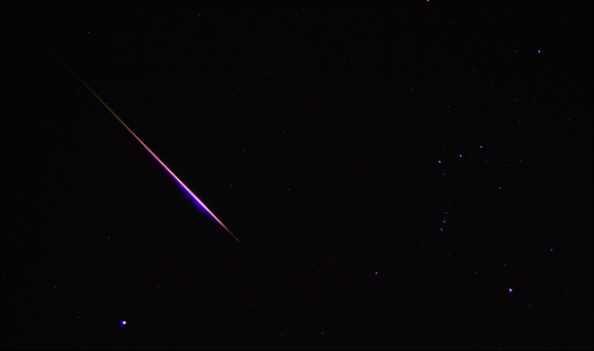|
The Feel-Good Guide to Sports, Travel, Shopping & Entertainment
|
||
| Main | Sports Events | Holidays & Observances | Pop Culture | Shopping | Travel |
|
MAIN
The Leonid meteor shower is an annual meteor shower that is extremely regular in its timing and can potentially be visible for days in the mid-autumn sky -- depending on weather and location
This year's Leonids meteor shower will begin in the late night hours of Sunday, November 17, but will really reach its peak just overnight during the wee hours of on Sunday, November 18, 2024 and continue into the early morning. A waning gibbous moon on the night of November 17 wiil present some interference for almost optimum vieiwing as the Leonids zoom by in the night sky at speeds of up to 45 miles per second. Although visible in both hemispheres, Canada and US East Coast residents usually have the best viewing in the southeastern sky. Expect best viewing sometime after midnight on November 17 and peaking between 3:30 and 5:30 am ET.
It's no small surprise that the Leonids are named after the constellation Leo, which is located in roughly the same point of the night sky where the Leonid meteor shower appears to originate from. In comparison to other annual meteor shows the Leonids - despite their namesake - are more apt to 'meow' than give off a loud roar. Still, they can be spectacular to gaze at especially when the sky is clear and visibility at an optimum.
The best place to observe the Leonid meteor shower (or any meteor shower for that matter), is somewhere dark, away from light pollution, and with the moon out of the field of vision. The less light visible, the more brilliant the meteor shower will be.
While mostly viewable to the naked eye, the annual Leonid meteor show may be in any year partially obstructed by the moon, clouds or night mist, so amateur astronomers might want to carry along a pair of binoculars just in case. Even on clear nights, some type of viewing aid may come in handy for catching sight of even the faintest of falling stars, aptly named "telescopic" meteors. On super clear nights, forget the telescope and simply look up. For photographing
the annual event, a digital camera mounted on a tripod helps to
steady the images that swiftly move across the sky. A quick trigger
finger also helps, but even random clicks during the height of
Leonid "prime-time" will also guarantee that you'll
catch something! Be sure to have the camera focused on infinity
and, if your camera permits, leave the shutter open for several
minutes for the most spectacular photographic effects. More about Leonid meteor showers around the Web: Meteor Showers - Good overview with dates of major meteor showers throughout the year plus general tips for best viewing, including photos and related information. Leonids - Wikipedia - Extensive background facts and historical information on Leonid sightings through the centuries, with photos and illustrations, related references and resources. About Meteors - Brief but informative overview of common terms that help identify various sizes and types of meteors.
|


